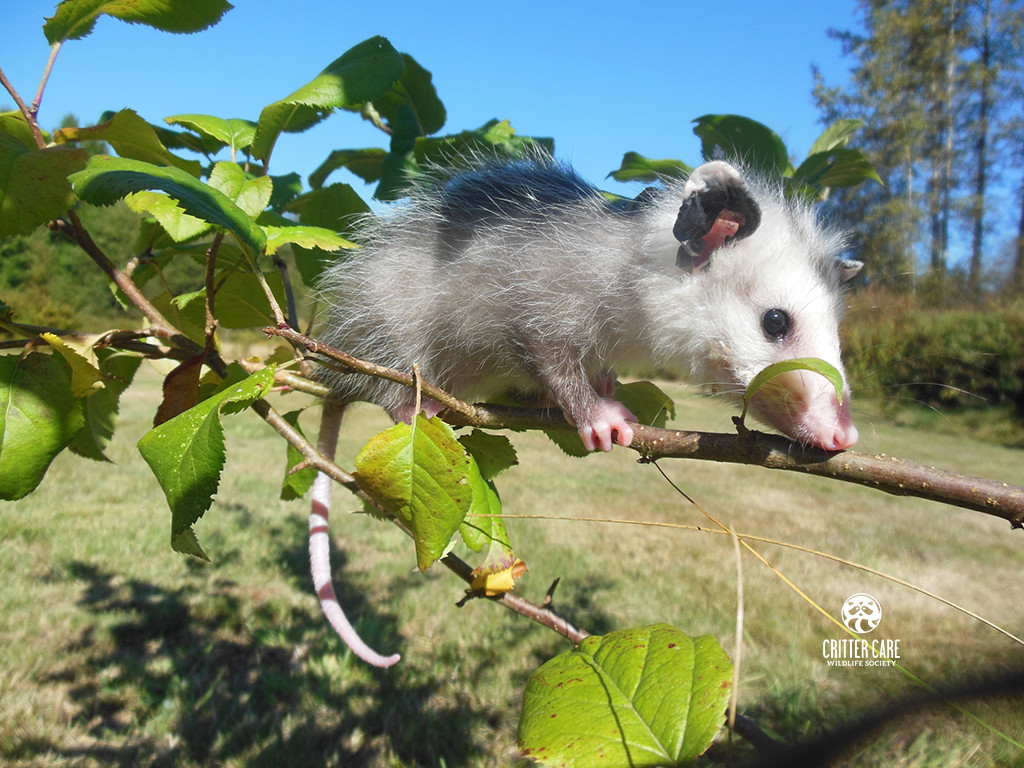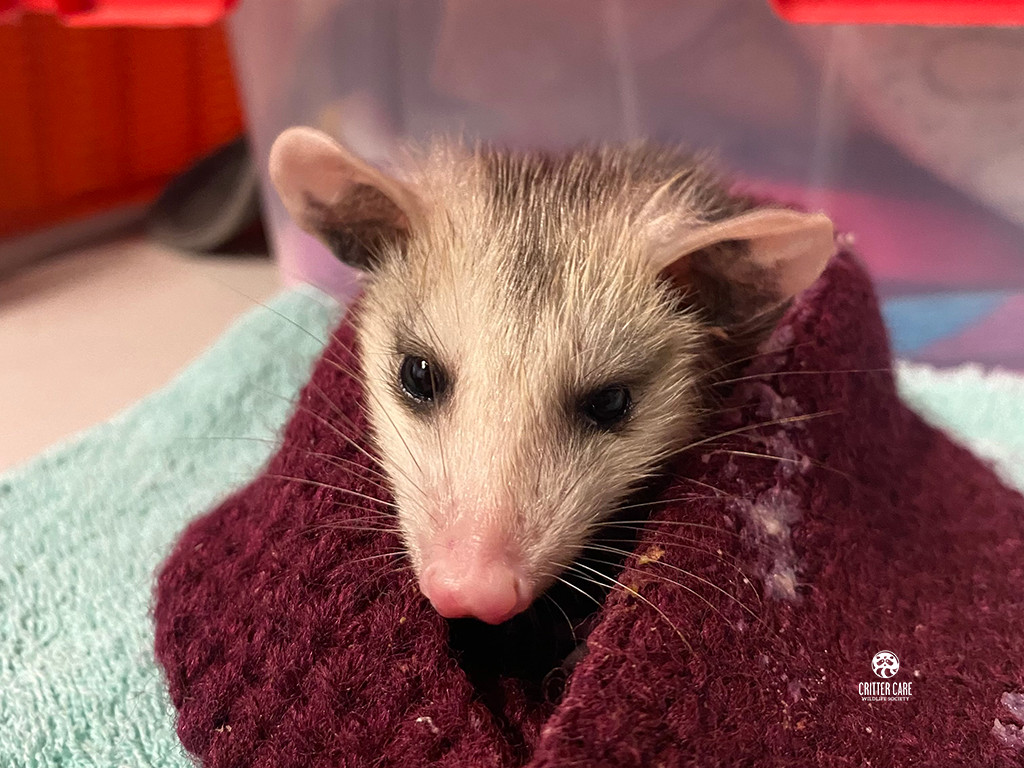Opossums are truly remarkable creatures, distinguished by their unique traits, behaviors, and habitats, setting them apart in the diverse animal kingdom. Often misunderstood, these resilient animals play a vital role in maintaining nature’s balance. In this article, we will delve into the question, “Where Do Possums Live?”, exploring their global distribution, preferred habitats, presence in Canada, and their behavior during daylight hours.
Global Distribution of Possums: A New World Native
Opossums, frequently referred to simply as “possums,” are indigenous to the Americas. While the term “possum” can sometimes cause confusion with their distant relatives, the Australian possums, true opossums are exclusively found in the Western Hemisphere. When people inquire about “where do possums live,” they are most commonly referring to the Virginia opossum (Didelphis virginiana), the most widespread and recognized species in North America. However, the opossum family (Didelphidae) is incredibly diverse, encompassing over 100 different species, with the majority inhabiting the lush landscapes of South and Central America.
These marsupials are masters of adaptation, allowing them to thrive in a remarkably broad spectrum of environments. From dense forests and expansive grasslands to surprisingly urbanized settings like bustling cities and quiet towns, opossums demonstrate an exceptional ability to colonize diverse habitats. This adaptability is a key reason behind their extensive range across the Americas. From the steamy tropical rainforests of South America to the suburban fringes of Canada, opossums have established themselves in a variety of climates and ecosystems.
The rich, biodiverse forests of South and Central America offer an ideal haven for numerous opossum species. These regions boast abundant trees and dense vegetation, providing ample opportunities for opossums to climb, forage, and seek refuge. Their arboreal skills and adaptability make them well-suited to these environments, where they can readily find food and shelter from predators within the complex forest structure, often in hollow logs or dense foliage.
 An opossum is eating a leaf from a tree branch
An opossum is eating a leaf from a tree branch
Habitat Preferences: What Makes a Place Home for a Possum?
While the Virginia opossum holds the distinction of being the only opossum species found in Canada and the United States, the majority of opossum diversity is concentrated further south, throughout Central and South America. These regions, blessed with warm climates and abundant vegetation, create an optimal environment for a wide array of opossum species. The expansive forests of Brazil, Argentina, and Paraguay are particularly renowned for their rich opossum populations, showcasing the greatest variety of species.
Virginia opossums, the prevalent species in North America, are most commonly observed in the eastern and central United States. They demonstrate a preference for habitats like forests, fields, and even residential backyards. Their opportunistic feeding habits, characterized by a diet that encompasses almost anything edible, have enabled them to flourish near human settlements. This explains why they are frequently encountered scavenging for food in urban areas, often rummaging through garbage cans or exploring gardens. As urban centers grow and suburban areas expand, opossums have adeptly adapted to living in closer proximity to humans, frequently venturing into suburban neighborhoods.
Possums in Canada: Northern Expansion
In Canada, the Virginia opossum stands as the sole opossum species and primarily resides in the southern regions of the country. Opossums are relatively recent immigrants to the Canadian landscape. Over time, their geographical range has progressively expanded northward, and they can now be found in areas such as southern Ontario, southern British Columbia, and parts of southern Quebec. This northward expansion is likely attributed to a combination of factors, including rising average temperatures due to climate change and the remarkable adaptability of opossums to diverse environments.
Within Ontario, opossum sightings have become common in cities like Toronto and Hamilton. They also inhabit the more rural landscapes of southern Ontario, where they establish homes in wooded areas or near streams and rivers. In British Columbia, opossums are more prevalent in the Lower Mainland, encompassing areas like Vancouver and the Fraser Valley. Their presence extends to southern parts of Quebec as well, where they tend to favor warmer microclimates.
Opossums in Canada often gravitate towards areas with human presence, where they can more readily access food sources. They may seek shelter in sheds, garages, or even attics if they find a way inside, particularly seeking refuge from the colder winter months. Although opossums are not ideally adapted to harsh cold climates, they have demonstrated resilience by utilizing human-made structures for shelter and warmth, aiding their survival in these more northerly latitudes.
 A small opossum is wrapped in a purple sweater.
A small opossum is wrapped in a purple sweater.
Daytime Retreats: Where Do Possums Hide During the Day?
Opossums are predominantly nocturnal animals, meaning their peak activity occurs during the night. As such, they spend their days resting and concealed in secure, undisturbed locations. This behavior serves a dual purpose: it helps them evade predators and conserve precious energy for their nighttime foraging and activities.
During daylight hours, opossums seek out a variety of sheltered spots for rest and concealment. These include natural refuges like burrows, hollow trees, dense brush piles, and crevices in rocks. They also opportunistically utilize abandoned dens created by other animals, such as skunks or foxes. In urbanized environments, opossums frequently take refuge under porches, in attics, or even within garages, showcasing their ability to exploit human structures for shelter. They are adept at identifying hidden spaces that offer both safety and protection from the elements and potential threats.
Unlike some animals that construct elaborate nests or permanent homes, opossums are more pragmatic. They utilize their surroundings to create temporary shelters, prioritizing concealment and safety. Their primary objective during the day is to remain out of sight of predators. Given their relatively slow movement speed, remaining hidden is their most effective defense strategy against potential threats.
Interestingly, opossums possess a unique and well-known defense mechanism when they feel threatened – “playing possum.” This fascinating behavior involves feigning death when confronted with danger. They can maintain this catatonic state for several minutes, or even hours, effectively deterring predators that prefer live prey. While “playing possum,” they become completely limp, their breathing becomes shallow and slow, and they may even secrete a foul-smelling fluid to enhance the illusion of death, making the act all the more convincing.
Opossum Behavior and Habitat Interplay
Opossums are renowned for their exceptional adaptability, a trait that strongly influences their habitat choices and behavior. In their natural, wild settings, they favor habitats that offer a combination of abundant trees, readily available water sources, and ample hiding places. Forests, swamps, and marshes are prime examples of ideal environments, providing both sustenance and shelter in abundance. However, their adaptability extends to suburban and urban landscapes, where they skillfully navigate and survive. They are frequently found in close proximity to human residences, often scavenging for food in garbage bins, compost heaps, or gardens.
Their omnivorous diet plays a crucial role in their habitat adaptability. Consuming both plant and animal matter, their diet is incredibly varied, encompassing insects, fruits, small animals, birds, eggs, and even carrion (dead animals). This broad dietary spectrum allows them to exploit diverse food resources across different habitats. Due to this scavenging behavior and varied diet, opossums are sometimes referred to as “nature’s cleanup crew,” contributing to ecosystem health by helping control insect populations and removing carcasses, which can aid in disease prevention.
Opossums are generally solitary creatures, leading largely independent lives. They do not form social groups and typically live alone, except during mating season or when a mother is raising her young. As marsupials, female opossums possess a pouch where they carry their newborns. After birth, the young opossums, called joeys, remain protected and nourished within the mother’s pouch for approximately two months before they become large enough to venture out. Even after leaving the pouch, they often cling to their mother’s back as she moves around, further demonstrating the marsupial characteristic.
Despite sometimes appearing slow and clumsy on the ground, opossums are surprisingly adept climbers. Their prehensile tails, acting as a fifth limb, provide exceptional grip and balance as they navigate branches and trees. They also possess opposable thumbs on their hind feet, enhancing their grasping ability on various surfaces. These adaptations enable them to efficiently forage for food in elevated locations and navigate complex arboreal environments that might be inaccessible to other animals.
Coexisting with Possums: Tips for Homeowners
Opossums are frequently misunderstood animals, and are sometimes unfairly perceived as pests, especially when they venture into homes or scavenge for food in residential areas. However, it’s important to recognize that opossums are generally harmless and naturally avoid human interaction. They are not aggressive and will not attack unless they feel cornered or directly threatened. Even in such situations, their primary defense is usually to “play dead” rather than engage in aggressive confrontation.
For those who find opossums in their vicinity, peaceful coexistence is readily achievable. Simple measures can be taken to minimize potential conflicts. For example, securing trash cans with tight-fitting lids effectively prevents them from accessing garbage. If opossums have taken up residence in an attic or under a porch, humane exclusion techniques can be employed to encourage them to relocate. This may involve sealing off potential entry points or installing a one-way door that allows opossums to exit but prevents their reentry.
Another proactive step to discourage opossums from lingering around your property is to eliminate potential food sources. This includes promptly cleaning up fallen fruit in yards, ensuring pet food is stored securely, and keeping compost heaps properly covered. By reducing readily available food, opossums are less likely to frequent your property.
While opossums may occasionally present minor inconveniences, their ecological contributions are significant. They are natural predators of ticks, which helps to reduce the spread of Lyme disease. They also play a vital role in controlling populations of common pests like rodents and insects. As scavengers, they contribute to a cleaner environment by removing dead animals, which can help to prevent the spread of diseases and maintain healthy ecosystems.
Final Thoughts
Opossums are truly remarkable animals, equipped with unique adaptations that enable them to thrive in a wide array of environments across the Americas. Whether they are skillfully navigating trees in South American rainforests, opportunistically foraging for food in suburban backyards, or seeking shelter in the southern regions of Canada, opossums are resilient survivors. Their capacity to adapt to diverse climates, varied diets, and different living conditions is genuinely impressive, and they play a significant role in the ecological balance of the ecosystems they inhabit.
By fostering a greater understanding of opossums and their natural behaviors, we can move beyond viewing them as mere nuisance animals. Instead, we can appreciate them as valuable members of the animal kingdom that contribute to natural pest control and overall environmental health. Should you encounter an opossum, remember they are likely simply passing through in search of food or shelter. With a little understanding and some basic preventative measures, humans and opossums can coexist peacefully, sharing our environments.
